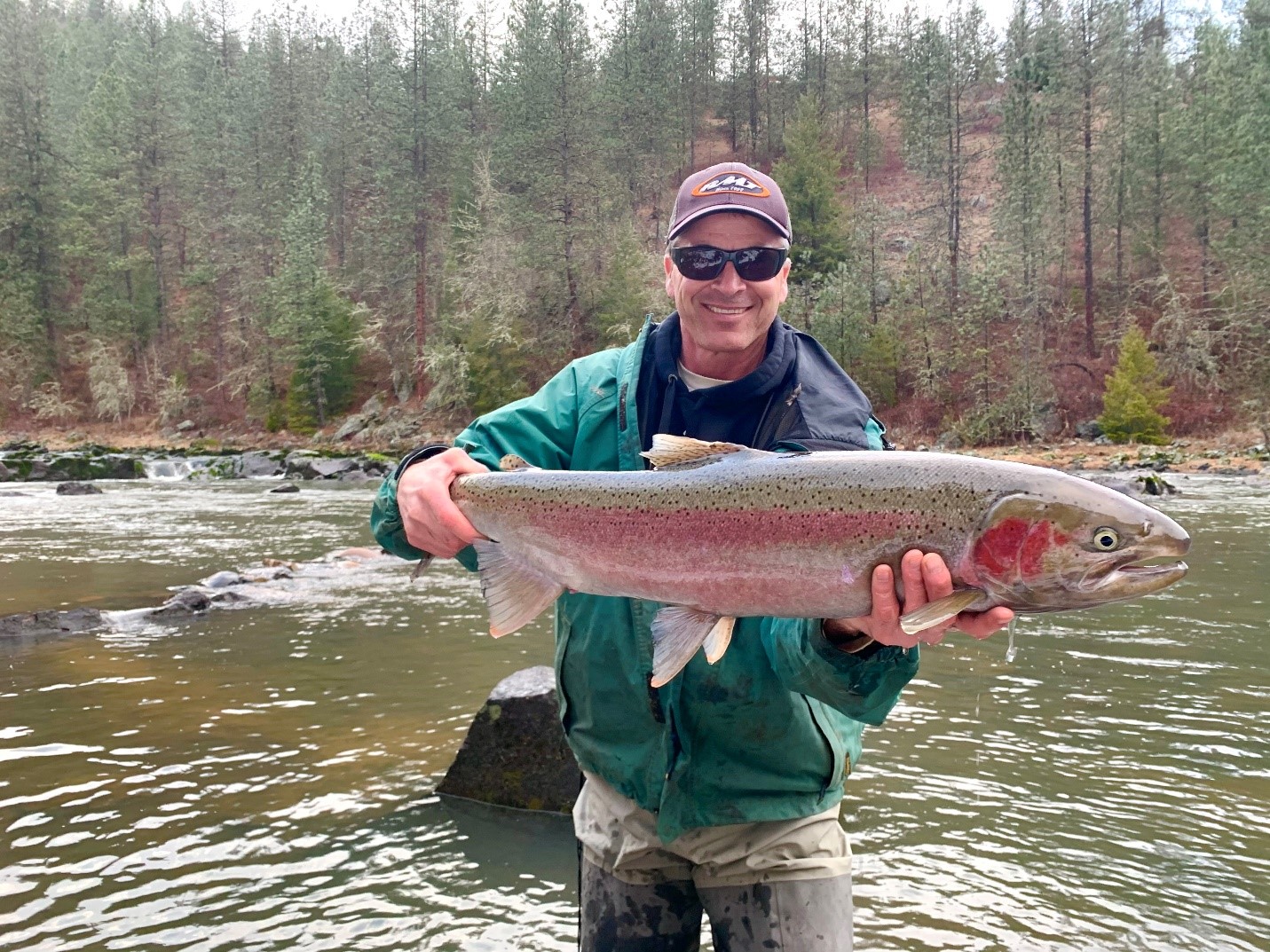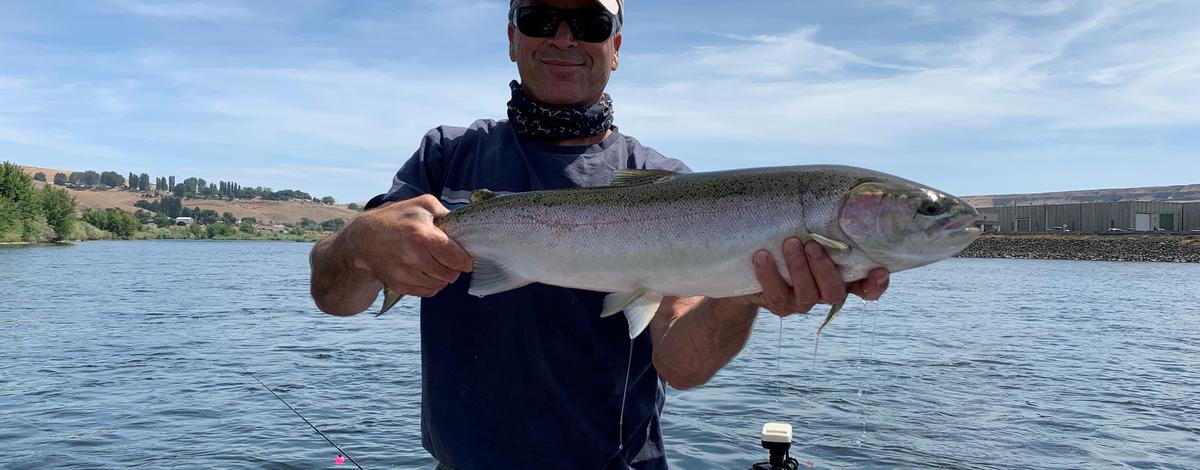Clearwater Steelhead Update
October 8, 2021
By Joe DuPont
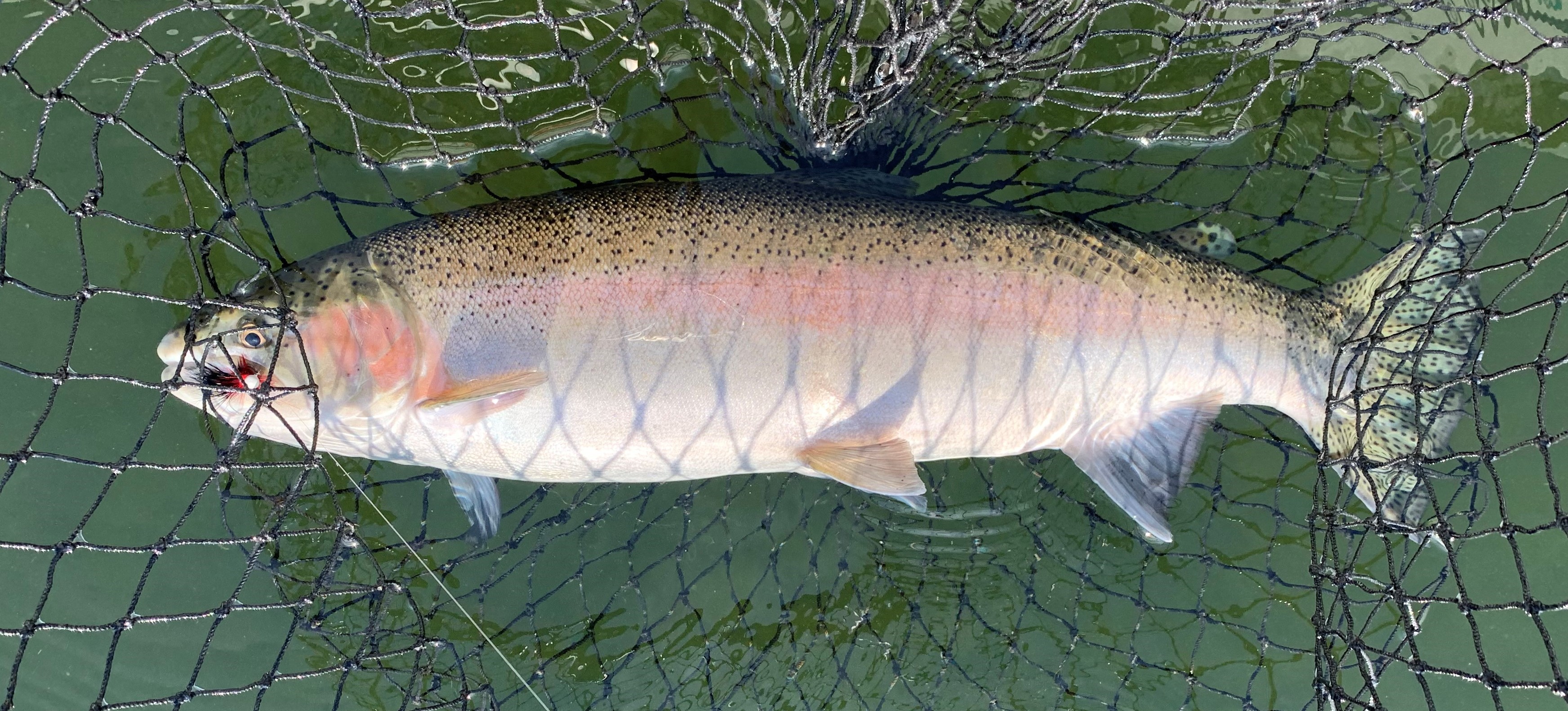
Hi everybody. Our Commission met yesterday (Oct. 7, 2021) to discuss whether steelhead limits should be changed in the Clearwater River basin. After looking over the data and recommendations from the Department, the Commission decided to reduce the daily limit to one steelhead. This will take effect on October 15 for all areas open to steelhead fishing in the Clearwater River basin, and at that time, will make the daily steelhead limit across the state of Idaho one fish for the fall season. For more details on the steelhead seasons and limits please visit the Idaho Department of Fish and Game’s website on steelhead seasons and rules https://idfg.idaho.gov/fish/steelhead/rules.
Now that you know what the Commission has decided, I want to share with you the information that was considered when making this decision. Those of you who read my previous steelhead update (steelhead-update 9-1) may remember that real early in the run, counts were not looking too bad. In fact, we indicated that if steelhead returning to the Clearwater River basin continued with an average run timing we would have a return similar to what occurred last year. Well, now that the run over Bonneville Dam is about 95% complete, we can tell you with a lot of certainty what the hatchery steelhead return to the Clearwater River basin will look like. I have put together the graph below that shows how this run (red line) compares to the previous 10 years. When compared to the previous 10 years, this return will rank as the third worst. It turns out this return is about a week early which explains why our early estimate was high.
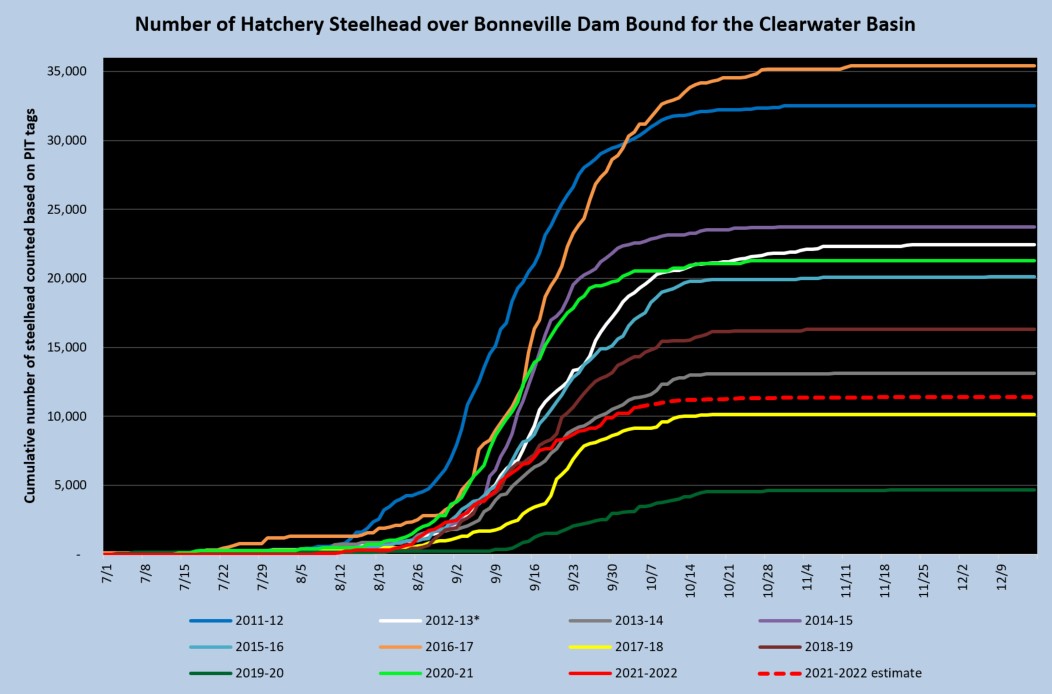
Now that we know how many hatchery steelhead are destined for the Clearwater River basin, we can closely estimate what our harvest share will be for this fishery. The graph below summarizes the number (based on PIT tags) of hatchery steelhead destined for the Clearwater River basin that have passed over Lower Granite Dam since 2010. The yellow portion of each bar shows how many of the returning fish spent one year in the ocean, the red portion shows how many spent two years in the ocean, and the white portion shows how many spent three years in the ocean. The bars presented for 2021-22 show how many steelhead we estimate will pass over Lower Granite Dam this year and next spring. The important part to look at in this graph is the number of fish that spent two or three years in the ocean before returning as adults, and that is because these are the fish that we use for broodstock. Based on this year’s return estimate, enough fish will be returning to make broodstock needs and allows some limited harvest. We estimate this year’s adult return will provide a non-Tribal harvest share of around 2,200 fish greater than 28 inches (these are the fish that spend two or three years in the ocean). For comparison purposes, last year’s harvest share was around 5,200 fish.
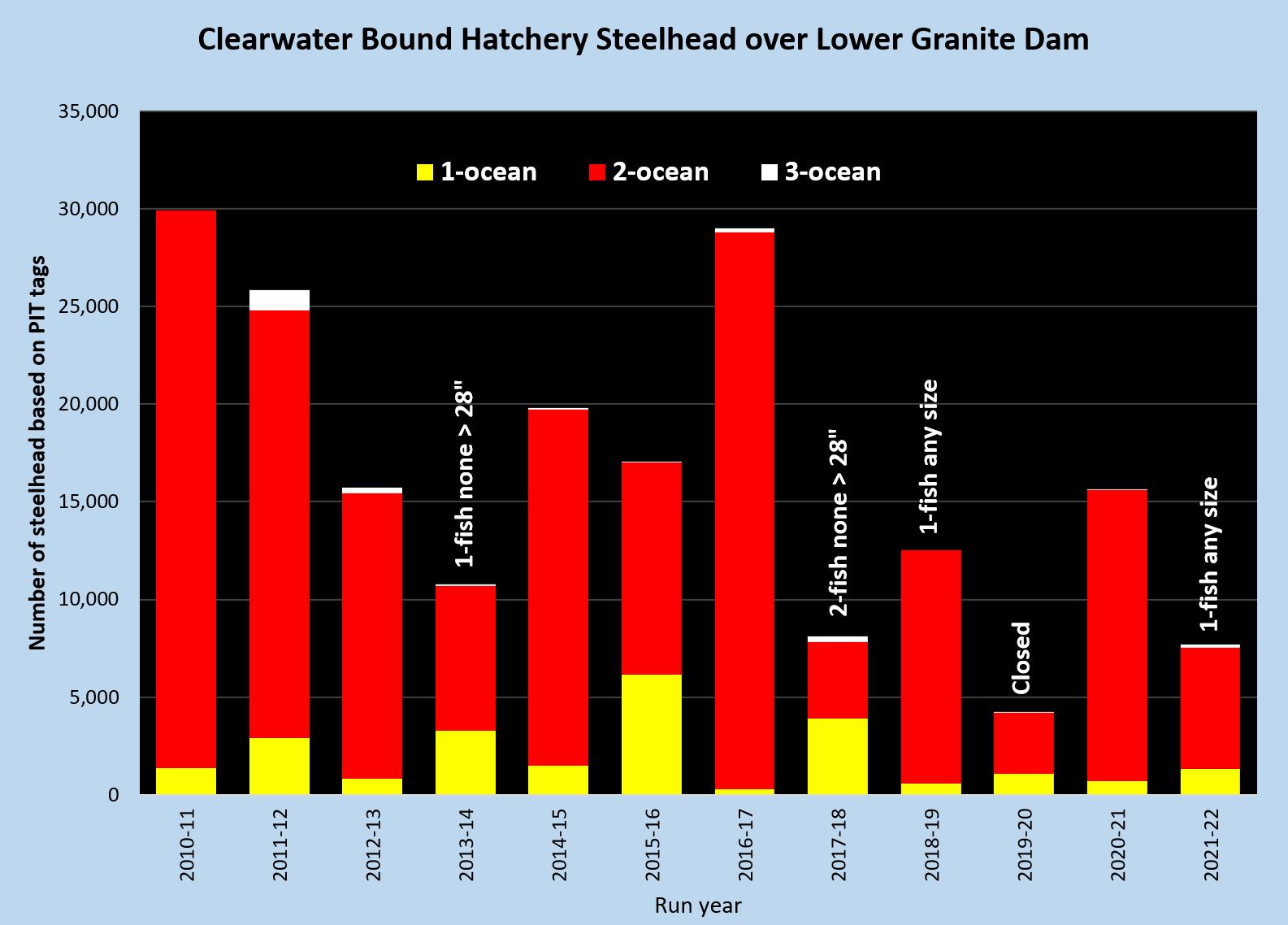
Typically in the fall, we provide a 2-fish daily steelhead limit with no size restrictions. However, over the years we have had to implement more restrictive limits in the Clearwater River basin when the run was down to ensure we met our broodstock goals. For all of those years we implemented more restrictive steelhead limits in the fall, they are shown in the graph above with white text written above indicating what the daily limits were. I can tell you that in all of those years, our restrictions were effective in allowing us to meet our broodstock goals. In fact, these regulations were so effective that we actually were able to provide more harvest opportunity in the spring. For that reason, we decided to take a little different approach this year. Instead of starting with a daily limit of one fish, none greater than 28 inches, we decided to start with a 1-fish daily limit with no size restrictions. This will allow more harvest in the fall when the fish are in better condition, but it may require us to increase the restrictions in the spring if it looks like we are approaching our harvest share. As always, we will keep you posted on if any changes in the seasons or limits are necessary to ensure we meet broodstock needs. Some of you who are paying close attention to the graph above may be wondering why we implemented a 1-fish limit in run year 2018-19 when the 2-ocean return was similar to other years when restrictions were not necessary to make our broodstock goals. The reason we did this is that was the year when some environmental groups threatened to sue because our permit (from NOAA fisheries) to operate our sport fishery had lapsed. We hoped that by implementing a 1-fish daily limit it would convince these groups to drop their case.
I also need to discuss wild steelhead as they are of great importance to us. To give you a feel for what the wild steelhead return to the Clearwater River basin has looked like over the years (since spawn year 2009), I have put together the graph below. This graph shows the estimated wild steelhead returns to different parts of the Clearwater River basin using genetic data collected from steelhead trapped at Lower Granite Dam. The fish that spawned last spring (spawn year 2021) is only an estimate as we don’t have all the genetic data analyzed yet, and the wild fish returning this year that will spawn next spring (spawn year 2022) is an estimate using wild steelhead dam counts and an understanding of how these fish have distributed across Idaho in previous years. If you look at this graph, you will see we had some really poor wild steelhead returns during spawn years 2018 through 2020. In fact, in spawn year 2020, wild steelhead returns to the Clearwater River basin fell below the critical abundance threshold (1,500 fish indicate by white dotted line) which required us to take a more conservative approach when managing our fisheries during that return. This year, the wild steelhead return to the Clearwater River basin looks like it will be around 2,500 fish which is not good, but it is above the critical abundance threshold where we get really concerned. We have learned that when we reduce limits, like we are doing this year, fishing effort declines which will only reduce the number of wild steelhead that are encountered in our fisheries.
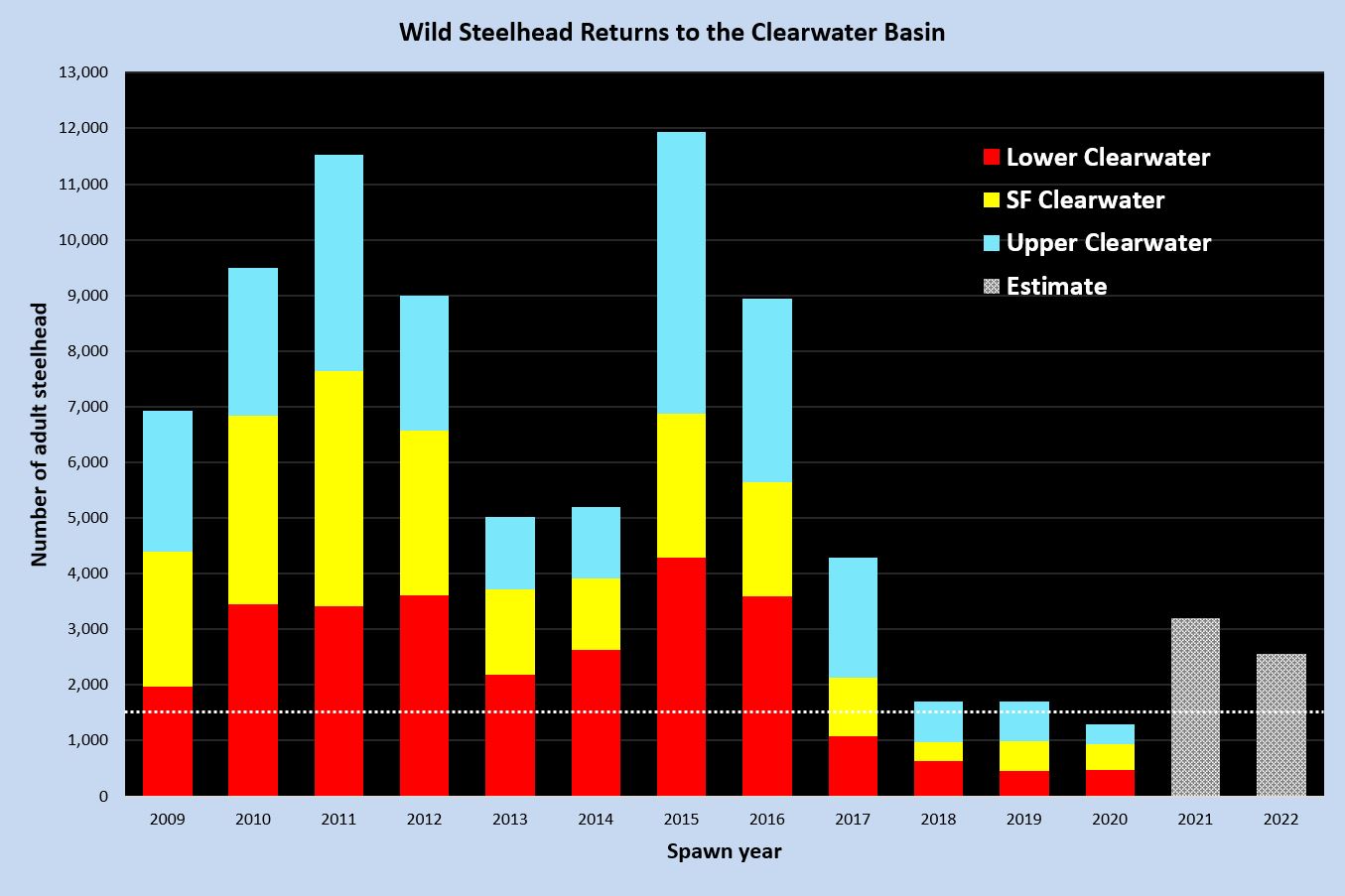
Because I don’t like to end on bad note, I do what to point out that the number of steelhead returning this year that spent one year in the ocean is more than we have seen in the previous three years (see the second graph above). This is one of the indicators we look at when we estimate what next year’s steelhead return to the Clearwater River basin will be like. This information suggests steelhead returns next year will be better! Finally, I want to mention that despite the down steelhead run this year, anglers have been enjoying the runs of fall Chinook Salmon and Coho Salmon that are returning to Idaho. It is certainly nice to have a diversity of fishing opportunities.
Take care everybody, and I hope you enjoy your fall.
